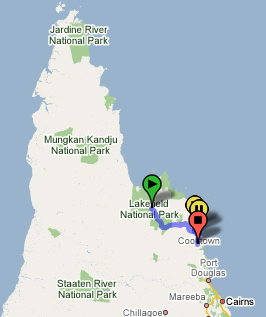
Where there are frogs…
We liked those cute little frogs very much until the morning, when we realized that they were so prevalent because there was food for them at our campsite…Peter and I both woke up covered in mosquito and sandfly bites. We looked pretty much like lepers for the rest of the trip. Nothing like a few facial sandfly bites to make you feel like a zitty teenager again!
Riding with Linc.
At breakfast, Roy announced that he would be leading the riders for the rest of the trip and that Linc was going to drive the truck (as far as we could tell, this was their standard arrangement and not some sort of punishment). He also announced that the ride from Kalpowar to the night’s lodging at Helenvale would be the most difficult day yet and that most people were likely to run out of water, fuel, or both. While Roy would never personally tell people which route to ride, he….strongly recommended…that people be honest about their skillset and choose the most appropriate route.
Without hesistation, Peter and I opted for the direct route, which would take us — along with Linc and the supply truck — down the Peninsula Development Road and through the homestead of Old Laura.
Roy gets ready to roll with his cigarette, fishing pole, and milk jug of fuel:
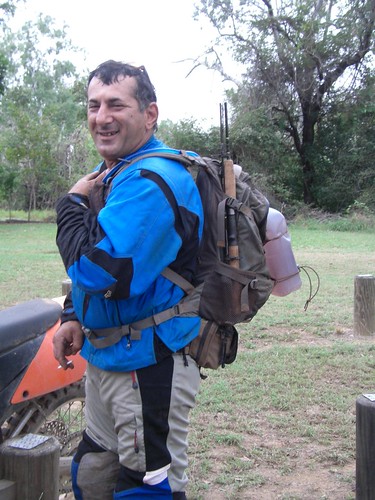
The advanced group turned right and we were to turn left. Linc waved us on ahead and told us to wait for him at Kennedy Crossing. Dennis was supposed to have come with us in the “kindergroup” (as we named ourselves) but we couldn’t find him anywhere…Linc was hoping that Joel or Roy had spotted him with their more advanced group.
Linc would never directly admit to being concerned about Dennis’s abilities on the harder route (once he fretted, “he won’t make it,” but then corrected himself to say “they’ll drag him through it”) but was definitely worried about the “what if” situation whereby Dennis was neither with us nor with Roy. He made some phone calls via the truck’s satellite phone and wanted to wait a few minutes at camp just in case.
So Peter and I rode on ahead to Kennedy Crossing, a nice open track with a few deceptive mudpuddles. The first one I hit way too fast — I had been trucking along at about 60kph and hit the mud at probably 30kph or so. The next thing I knew, I was sliding down the road under the bike, alternately thinking “SHIT!” and “WHEEEEE!”. Peter had been riding behind me so he picked the bike up while I assessed my own damage — a slightly sore wrist and a left thigh that I knew would get a really pretty bruise. But otherwise, the bike and I were just fine, and I rode away from the fastest moving crash I’ve ever had.
When Linc met up with us at Kennedy Crossing, there was still no word from Roy, so we had to assume that Dennis was with the other group. We parked the bikes and truck in the shade and Linc took us on a small hike to “look for crocs and snakes”. We didn’t see any snakes, but Peter and Linc did see the tail of a 15-foot crocodile slithering into the water.
Croc hunting along the Kennedy River:
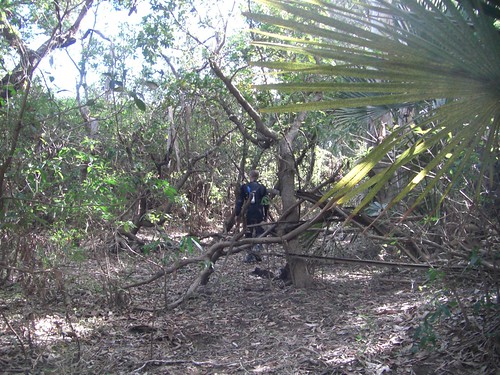
Back on the bikes, we hit another section of mudpuddles, so I slowed way down this time…..whoops, TOO slow. No momentum in the slippery stuff means another tipover. I finally got Peter to take a photo of the bike down, which appeased the gravity gremlins and I never fell again for the rest of the trip. If only he’d just taken a picture of that first drop in the sand in Bamaga!
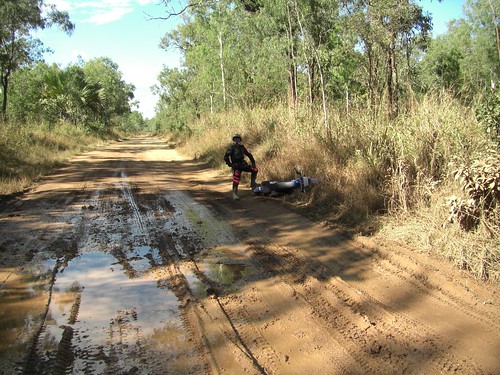
That second mudbath jammed my throttle up a little bit, so when we met Linc at the Old Laura Homestead, he told us to wander around and see the historic buildings while he fixed my bike up. Twist my arm!
The homestead was formed during the Palmer River Goldrush in the 1870s in order to supply beef to the goldfields. The homestead itself was last occupied in 1966 and is now part of the Queensland National Parks and Wildlife Service.
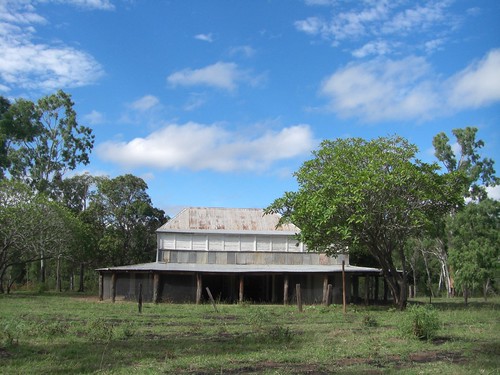
Battle Camp Road.
From Old Laura, we turned east on Battle Camp Road (though “road” is perhaps being a bit optimistic) and headed towards Cooktown and the coast.
Battle Camp was also named during the Palmer River Goldrush. In November 1873, a group of camping gold prospectors was surrounded and attacked by approximately 500 Aborigines. It was the only attack on record in which the Aborigines formed an organized, large attack on the settlers — all other confrontations and killings were done by ambush or sneak attack.
Still shot from a video of me crossing the Normanby River, near where the gold prospectors had camped:
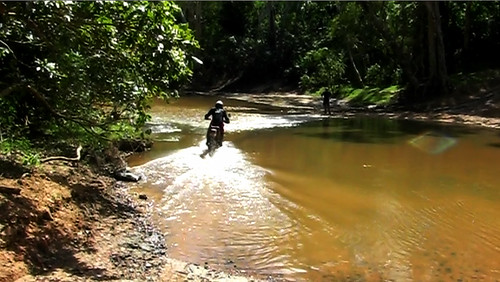
One of the best river crossings of the whole trip was in this section when we crossed over Isabella Falls. Linc stopped in the truck to make sure we didn’t have any trouble and after he went on ahead, we rode back and forth over the river a couple more times. A couple from South Australia crossed the river in their 4×4 then stopped to chat for a while. Everyone we met out on the tracks were very nice and friendly and were obviously loving the environment.
The “real” falls are down below this first ledge, but there wasn’t a way to photograph both them and the bike at the same time:
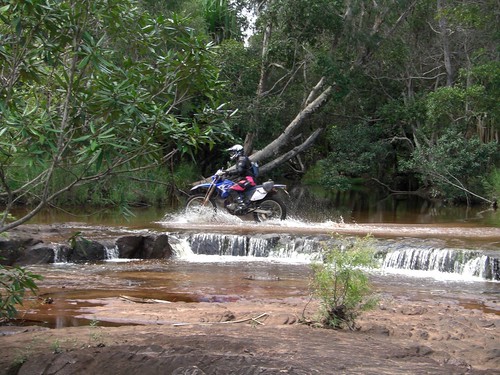
Video:
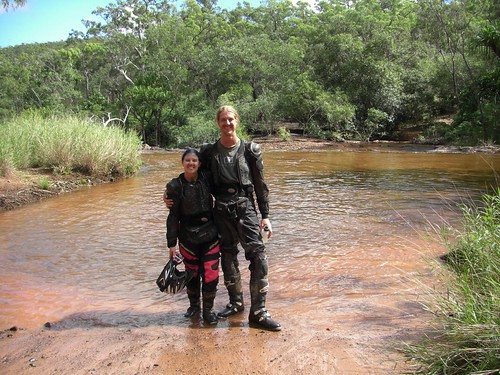
Cooktown.
Twisty, hilly dirt roads brought us to the coastal town of Cooktown, named, of course, for Captain James Cook. Cooktown boomed during the Palmer River goldrush, with a population of over 35,000. During WWII, the town became primarily a military outpost for both Australian and US armed forces. Today, Cooktown has a population of about 2000 permanent residents and is considered “the Queen of the North”.
We sure had to agree with that assessment, as a little shop in Cooktown whipped Linc up a great hamburger and Peter and I two thick malted milkshakes. You can’t go wrong with a town that can make great milkshakes.
Linc had some errands to run in town, so he sent us off on the bikes up to Grassy Hill, which overlooks the town and inlet. It was from this point that Captain Cook was able to navigate a safe route for the Endeavor in between all of the offshore reefs. The road up to the lookout was fantastically steep (and unpaved, of course), which made for a few fun games of chicken with descending 4×4 Land Cruisers.
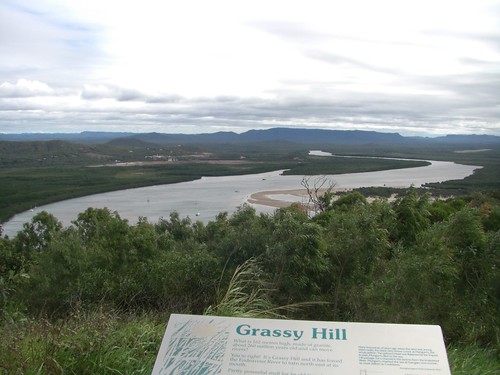
This lighthouse was originally built in 1886, though I believe it has since been restored numerous times due to the insane winds at the peak:
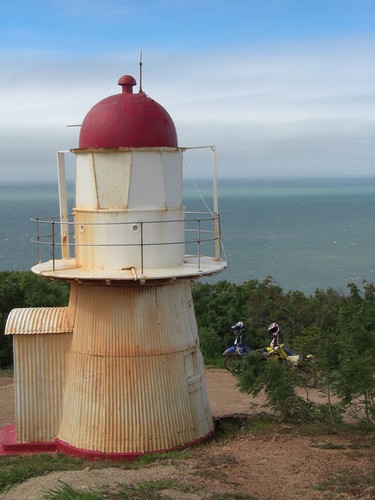
Kangaroo commemorating the first sighting of Australia’s answer to the forest rat:
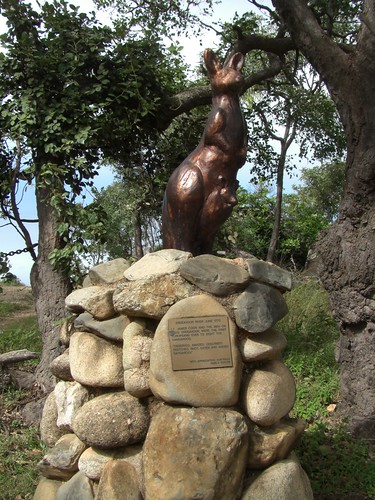
The Lion’s Den.
From Cooktown, it was a quick 30km jaunt south to Helenvale and the Lion’s Den Hotel. We passed Black Mountain (Kalkajaka) National Park, where Linc told us the Aboriginal story of two brother wallabies who competed to build the tallest hill of granite in order to wed the serpant princess.
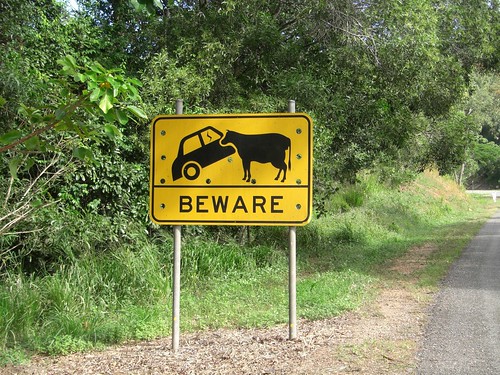
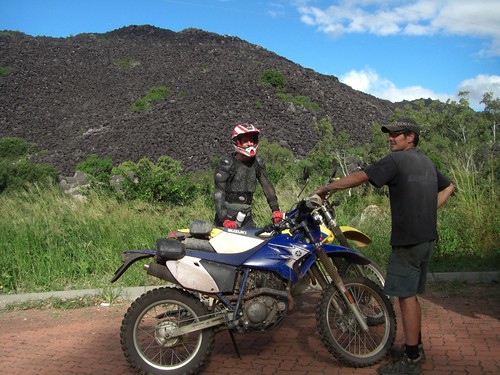
A passing rainstorm over the Laura Basin made for a nice rainbow shot just before the Lion’s Den:
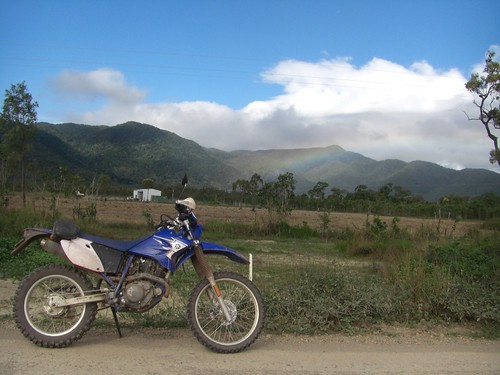
The Lion’s Den is one of Queensland’s most famous pubs, having been in the same family from 1875 until 1964 (since then, it’s had numerous owners; we spent some time chatting with Chris, the current owner). It’s one of those fun little places where everyone writes on the walls and the jokes are all off-color. Rugby was on the television, the VBs were cold, and they had a washing machine…life was very, very good.
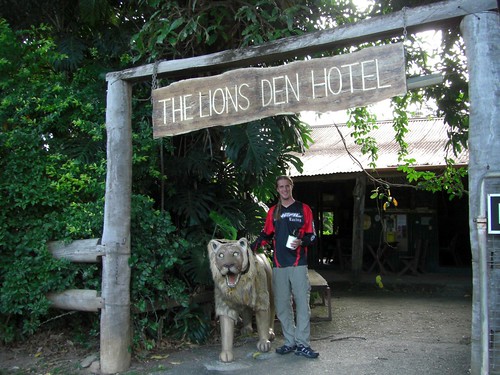
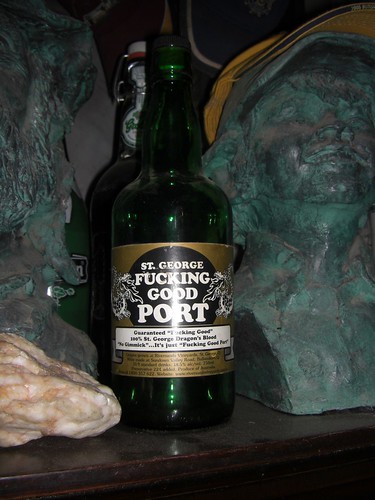
The rest of the group arrived just before sunset, and Peter, Linc, and I ran outside to toast their survival of the hardest day. We were happy to see Dennis towards the back of the pack, going slowly but alive and well! Linc was finally able to relax and have a beer…I think the poor guy spent all day worried that Dennis was out on his own somewhere.
My award for “most hardcore,” though, went to the rider who sheared almost all of the teeth off of his front sprocket and arrived at the Lion’s Den being towed by a rope — at full speed — from one of the other bikes.
Later in the evening, Peter made a donation to the Royal Flying Doctor Service, which allowed him to borrow a Sharpie marker from the bar.
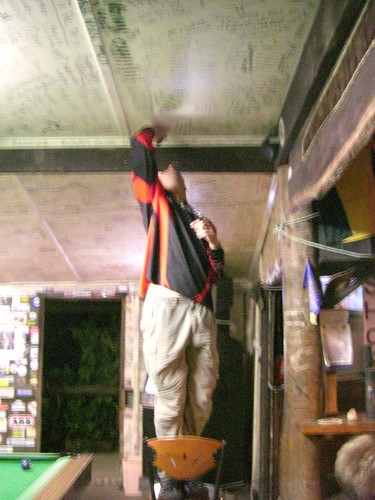
Awwwa!
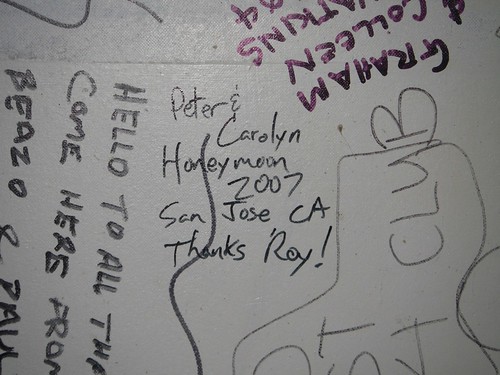
Drinks, showers, and washing machine use was had by all, and everyone enjoyed our first night on “real” beds.
